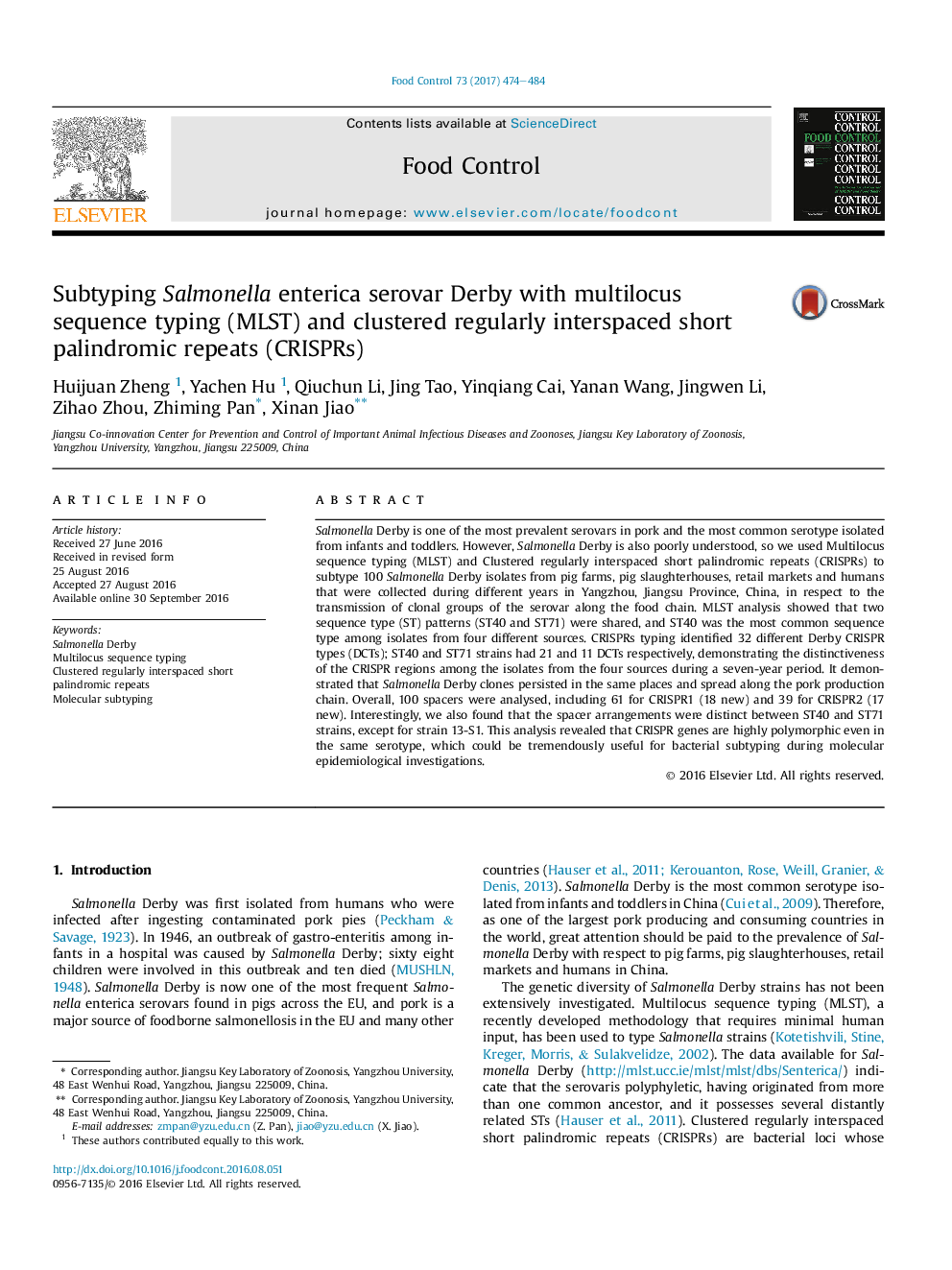| کد مقاله | کد نشریه | سال انتشار | مقاله انگلیسی | نسخه تمام متن |
|---|---|---|---|---|
| 5767666 | 1413202 | 2017 | 11 صفحه PDF | دانلود رایگان |

- The first study of the epidemiology of Salmonella Derby in China.
- CRISPRs typing provided superior discriminatory power over MLST for identifying different sources of Salmonella Derby.
- We found 35 new spacers in Salmonella Derby.
- The spacer arrangements were distinct between ST40 and ST71 strains in Salmonella Derby.
Salmonella Derby is one of the most prevalent serovars in pork and the most common serotype isolated from infants and toddlers. However, Salmonella Derby is also poorly understood, so we used Multilocus sequence typing (MLST) and Clustered regularly interspaced short palindromic repeats (CRISPRs) to subtype 100 Salmonella Derby isolates from pig farms, pig slaughterhouses, retail markets and humans that were collected during different years in Yangzhou, Jiangsu Province, China, in respect to the transmission of clonal groups of the serovar along the food chain. MLST analysis showed that two sequence type (ST) patterns (ST40 and ST71) were shared, and ST40 was the most common sequence type among isolates from four different sources. CRISPRs typing identified 32 different Derby CRISPR types (DCTs); ST40 and ST71 strains had 21 and 11 DCTs respectively, demonstrating the distinctiveness of the CRISPR regions among the isolates from the four sources during a seven-year period. It demonstrated that Salmonella Derby clones persisted in the same places and spread along the pork production chain. Overall, 100 spacers were analysed, including 61 for CRISPR1 (18 new) and 39 for CRISPR2 (17 new). Interestingly, we also found that the spacer arrangements were distinct between ST40 and ST71 strains, except for strain 13-S1. This analysis revealed that CRISPR genes are highly polymorphic even in the same serotype, which could be tremendously useful for bacterial subtyping during molecular epidemiological investigations.
Journal: Food Control - Volume 73, Part B, March 2017, Pages 474-484